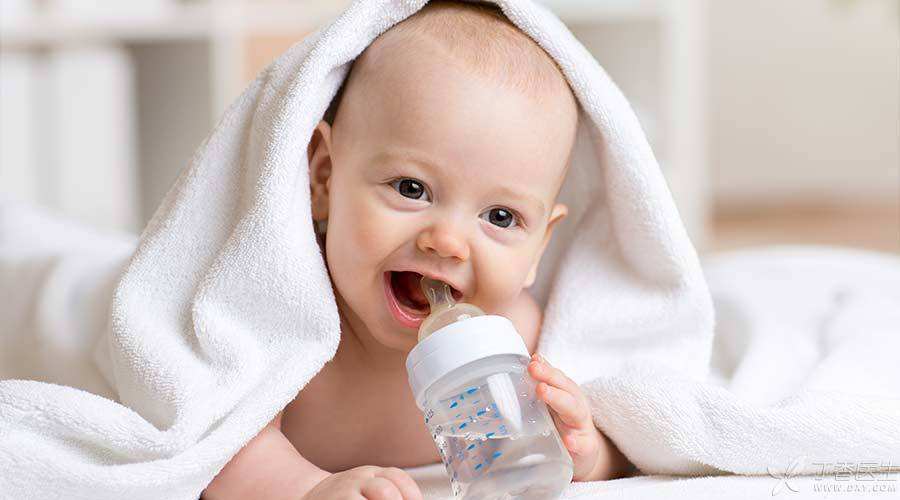
Summer is coming, both adults and babies should increase their intake of water.
Dr. Shihan also told everyone earlier that if the baby is six months old, whether it is breast-fed or mixed with formula milk, it generally does not need to drink extra water.
If such a small baby urinates yellow, it may not be enough breast milk or formula milk for the baby. Mothers should first consider increasing the amount of milk. Instead of blindly feeding water, especially some older generations like to feed water to their children according to their feelings, which even leads to disputes between mother-in-law and daughter-in-law…
After six months, a small amount of water can be fed, especially for babies who eat supplementary foods. Parents should pay attention to find signs of thirst in time.
Daily water replenishment depends on formula
Many parents backstage are asking, how much water does the baby need to replenish in a day? If the calculation is rough, it can be estimated according to the following table under normal circumstances:
Children’s Daily Water Requirement
It should be noted that the daily amount of water required does not refer to the amount of plain boiled water that needs to be drunk every day, but includes all the water consumed during the day, including the water in food.
In hot weather, liquid intake must be increased.
Due to the vigorous metabolism of children, the excretion rate of water is faster than that of adults. Moreover, the younger the age, the greater the demand for water and the worse the tolerance to water shortage. High temperature, high heat and excessive sweating may cause dehydration to varying degrees.
Therefore, in high temperature weather, when the temperature reaches ≥ 32 ℃, in addition to keeping the baby in a cool and ventilated indoor and outdoor as far as possible, no matter how much activity, it is necessary to appropriately increase the intake of liquid.
How much extra? Look at the baby’s condition,
How much more liquid does that mean?
When the weather is hot, with the rise of the temperature, in order to maintain the normal body temperature, the skin will sweat. The amount of sweat is related to the ambient temperature and the heat dissipation mechanism of the human body, that is to say, the degree of sweat of each baby is different.
The American Academy of Pediatrics notes that when a child loses water through sweating, You can give your child water twice a day or more], but you don’t mention the amount of water, that is to say, the question [how much water do you need to give your child] is unsolved, the answer is not necessarily, depending on the specific situation of the child. Parents should still find signs of water shortage in time, such as yellow urine and dry lips.
-
Some babies may prefer to drink milk (breast milk or formula milk) frequently to get the water they need, rather than drinking plain boiled water or other liquids, which is also possible. It is not necessary to feed water to replenish water, mothers should remember that most of the milk is water.
-
Again, this is only the recommended amount. Parents need to adjust it according to the actual situation of the baby. Moreover, this refers to the total amount. The amount of milk and the amount of water in the supplementary food must be subtracted, and the rest is the additional amount of water that needs to be supplemented.
Plain boiled water is a treasure
Once again remind parents that warm and cool plain boiled water is the most suitable drink for children, and fruit juice and carbonated drinks cannot replace plain boiled water.
Drinking water is a habit problem that needs to be cultivated slowly. Drinking water during the day should be arranged between meals and once every hour when necessary. Don’t wait until you are thirsty to think of drinking water. Don’t swallow it too fast and too fast, which is easy to cause choking or hiccups or abdominal distension.
